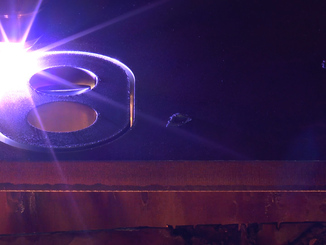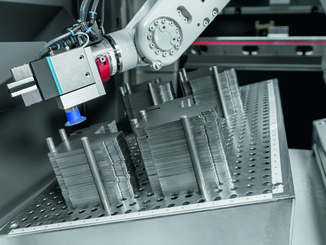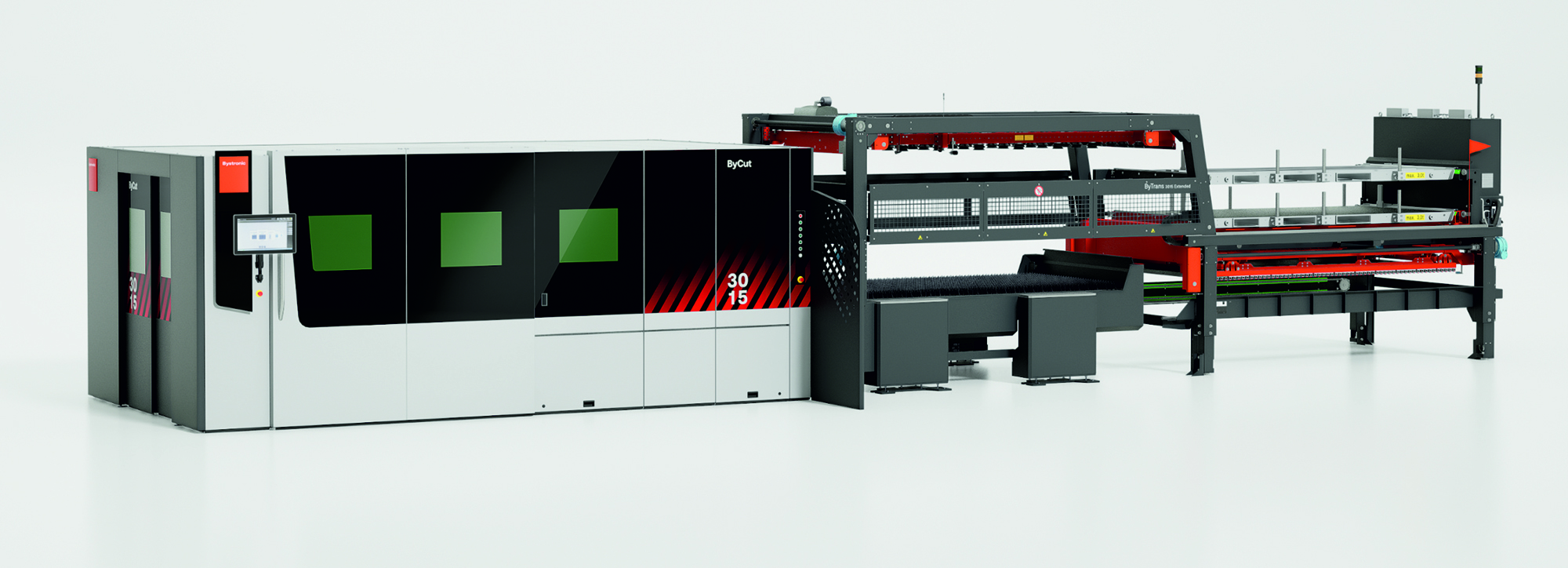
At first glance, sailing and modern sheet metal production have little in common. And yet there are parallels: In both disciplines, the speed is at the limit of what is technically possible and the crew is supported by real-time information. Bystronic’s networked production management ensures that even smaller sheet metal processors can be at the forefront of the race for orders.
Sailing is undergoing a revolution. Instead of gliding through the water on their hulls, modern sailboats float over the waves thanks to hydrofoils. After the movable hydrofoils made catamarans fly at past regattas, the new technology was used for the first time under monohull yachts at the 2021 America’s Cup in New Zealand. The pace has tripled as a result. The foils allow speeds of up to 50 knots – that’s more than 90 kilometres per hour.
Aerodynamics is paradoxically more important than hydrodynamics for these boats. But there is another technological revolution in sailing that is not quite so obvious. The crews in the America’s Cup are supported by countless real-time information: Wind and weather reports, sea conditions, positioning of opponents, intelligent course control and much more.
Around 1000 sensors on the boat constantly feed information to the skippers, helmsmen, sailors, coaches and engineers. As in Formula 1, the racing action is monitored from a “pit wall” – a control centre where all the information flows together. There’s no doubt about it: data is the key to success in sailing today.
More speed, more data
In the sheet metal industry, we have seen a disruption in recent years with the fiber laser, a new technology comparable to foils in sailing. The cutting speed of a fiber laser cutting machine is up to four times higher than that of a CO2 laser machine. The efficiency has tripled and the energy efficiency is almost twice as high.
The rapid progress in automation solutions for loading and unloading the cutting machines brings further increases in efficiency. And we are also experiencing a second revolution in our industry, that of data: The smart factory is also controlled via a kind of “pit wall”. Here, too, countless pieces of information flow together – from the production itself as well as from the entire environment of the factory.
As in sailing, the intelligent use of data in the sheet metal industry will improve decision making to get where you want to go even faster. Artificial intelligence and machine learning can contribute greatly to this.
IT and OT grow together
The home port for production operations used to be self-contained and rigid Material Requirement Planning (MRP) systems, into which hardly any external data flowed. This is changing: we are moving into a new world of real-time connectivity and complete integration of previously separate systems. Information Technology (IT) and Operational Technology (OT) are growing ever closer together.
In the future, digital ecosystems will ensure the flow of data from the entire supply chain into the warehouse and production systems of the smart factory, similar to the smart navigation tools in sailing. Both disciplines are about the optimal coordination of software and hardware: Just as flying boats are already networked with information systems in the water and on land, our intelligent machine tools will have to interact with the software systems of the smart factory and their environment in the future.
Small boats are more agile
Bystronic would like to enable sheet metal processors to do just that in the near future. Our vision is a production orchestration that provides solid predictability of what can be produced and by when, while being flexible enough to respond quickly to changes in the supply chain. Modularity, scalability and agility are the key requirements for such a system to cover all possible production scenarios. Our cloud-based Digital Operating Platform (DOP) meets these requirements.
In its development work, Bystronic is also thinking above all of the smaller companies in the sheet metal industry. In the future, they too should have the possibilities that were previously reserved for the big players. They should be able to plan, control and evaluate their production processes as precisely as their major competitors. And since small boats are inherently more agile than large ships, smaller and medium-sized production companies are likely to be increasingly ahead in the race for orders in the future.
Improved decision making
Sailing in the stormy waters of today is challenging for manufacturing companies. The uncertain situation with regard to the further development of the pandemic makes planning more difficult, and at the same time the competitive pressure in the globalized world is higher than ever. In this dynamic environment, it is a challenge to react flexibly to changes and to always make the right decisions in order to be the first to reach the goal.
Bystronic wants to “help customers fly over the water instead of laboriously sailing through the waves”.
The new Bystronic solutions enable production companies to take the step towards the Smart Factory: Efficient machines and state-of-the-art software are networked to form an intelligent production environment. Users benefit from high computing capacities in the cloud, enriched business logic, a clear management platform and, last but not least, improved decision-making thanks to artificial intelligence and machine learning.
Web:
www.bystronic.com



